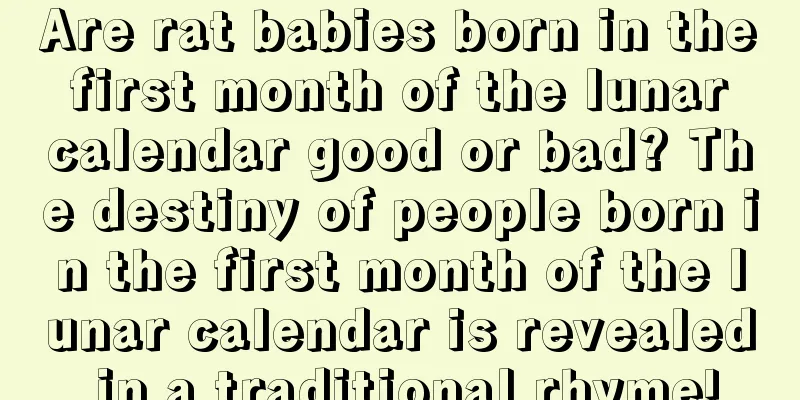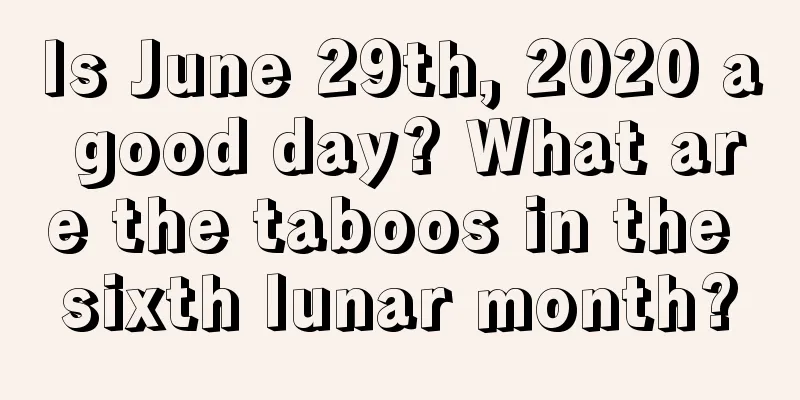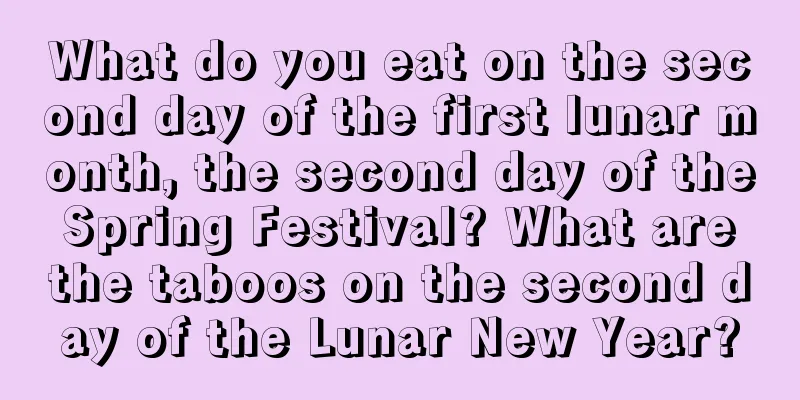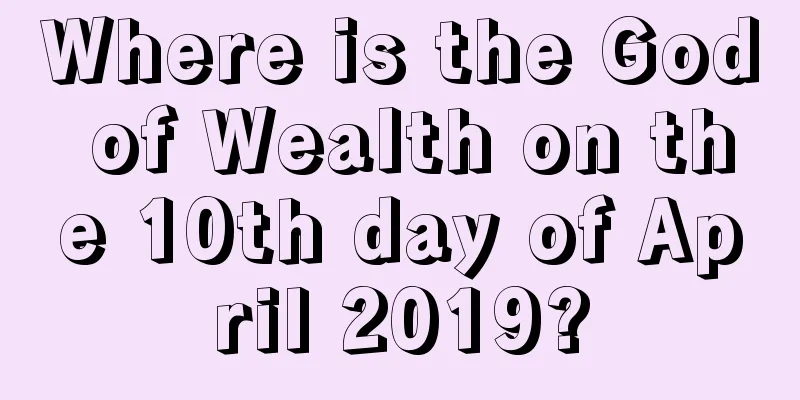What is the month, day and week of the Chinese New Year in 2018? What are the customs of the Spring Festival?

Introduction: The Lunar New Year is a grand traditional festival in our country, and the customs related to the Spring Festival are even more rich and diverse. So what is the month, day and week of the Chinese New Year in 2018? What are the customs of the Spring Festival? Follow the editor to learn more about it! For more details about the 2018 Spring Festival, please visit Fortune Teller.com for consultation.What is the month, day and week of the Chinese New Year in 2018?The Spring Festival in 2018 is on Friday, February 16 (the first day of the first lunar month in the Year of the Dog). The first to fifteenth day of the first lunar month during the Spring Festival in 2018: February 16, 2018 (Friday) - March 2, 2018 (Friday) 2018 Spring Festival holiday schedule: Regarding holidays, the Holiday Office has not yet announced the holiday arrangements for the 2018 Spring Festival. According to past practice, the Spring Festival holiday lasts for 7 days, from February 15 (New Year's Eve) to February 21 (the sixth day of the first lunar month).What are the customs of the Spring Festival?Sweep the dust"On the 24th day of the twelfth lunar month, dust and sweep the house." According to Lüshi Chunqiu, the custom of sweeping the house during the Spring Festival has existed in my country since the Yao and Shun era. According to folk saying: because "dust" and "old" are homophones, sweeping the dust during the New Year has the meaning of "getting rid of the old and bringing in the new", and its purpose is to sweep away all the bad luck and bad luck. This custom embodies people's desire to break the old and establish the new and their prayers to bid farewell to the old and welcome the new.Pasting Spring Festival coupletsSpring Festival couplets are also called door couplets, spring stickers, couplets, couplets, peach charms, etc. They use neat, parallel, concise and exquisite words to depict the background of the times and express good wishes. They are a unique literary form in my country. During every Spring Festival, no matter in the city or in the countryside, every household will select a bright red couplet to paste on the door to add to the festive atmosphere.Window paper-cuts and inverted paper-cutsPeople in the folks also like to stick various paper-cuts on windows - window flowers - with the word "Fu" in them. Window paper-cuts not only set off the festive atmosphere, but also combine decorative, aesthetic and practical functions. Paper-cutting is a very popular folk art in my country and has been loved by people for thousands of years. Because it is mostly pasted on windows, it is also called "window flowers". The word "Fu" means blessing and good fortune, and it embodies people's yearning for a happy life and their wishes for a better future.New Year PicturesIt is also very common to hang New Year pictures during the Spring Festival in both urban and rural areas. The dark and colorful New Year pictures add a lot of festive atmosphere of prosperity and joy to thousands of households. New Year pictures are an ancient folk art in my country, reflecting the people's simple customs and beliefs and embodying their hopes for the future. New Year pictures, like Spring Festival couplets, originated from "door gods".Stay up all nightStaying up all night on New Year's Eve is one of the most important traditional activities during the Chinese New Year, and the custom has a long history. The earliest record can be found in "Fengtuzhi" by Zhou Chu of the Western Jin Dynasty: On New Year's Eve, people give gifts to each other, which is called "gifting the year"; they invite each other to drink and eat, which is called "saying goodbye to the year"; the young and the old drink together and give good wishes, which is called "dividing the year"; everyone stays up all night waiting for dawn, which is called "keeping the year". To this day, people still have the habit of staying up on New Year's Eve to welcome the new year. In ancient times, staying up all night to celebrate the New Year had two meanings: for the elderly, it was to "bid farewell to the old year" and to cherish time; for the young, it was to extend their parents' lives. Since the Han Dynasty, the time when the old year turns to the new year is generally midnight.FirecrackersThere is a saying among the Chinese people that "firecrackers are set off when the door is opened". When the new year comes, the first thing every household does when they open the door is to set off firecrackers, using the sound of firecrackers to get rid of the old and welcome the new. Firecrackers are a specialty of China, also known as "firecrackers", "firecrackers" and "firecrackers". It has a very early origin and has a history of more than two thousand years.pay a New Year callOn the first day of the New Year, people get up early, put on their most beautiful clothes, dress neatly, go out to visit relatives and friends, greet each other, and wish each other good luck in the coming year.Summary: The above content is about [What day and month is the Spring Festival in 2018? What are the customs of the Spring Festival? 】Problem analysis, hope it can help everyone! |
Recommend
2019 Summer Solstice Almanac Query, What Not to Do During Summer Solstice
June 21st is the Summer Solstice. After the Summer...
Mar 06, 2020 · Can I open a position and sign a contract on February 13? What are the zodiac signs?
There are corresponding do’s and don’ts for every ...
Lunar calendar for June 21, 2018, is it a good day?
The wind and rain in June, drop by drop, hit the ...
A comprehensive review of traditional Lantern Festival delicacies that foodies shouldn’t miss!
Introduction: When talking about the Lantern Festi...
What are the do's and don'ts on May 11th of the lunar calendar in 2017?
The Dragon Boat Festival month is the fifth month...
Is it a good time to open the market and do business on the 24th day of the 10th lunar month in 2017?
Introduction: Every day is presented differently, ...
What do you think of April Fools’ Day, April 1, 2018? Is it a good date to burn incense and pray?
Introduction: Burning incense and praying for bles...
Is the day before the heavy snow on October 22, 2020 an auspicious day for signing a contract? Poems about the heavy snow solar term
Introduction: Generally, you need to choose an aus...
Can I have sex on May 16, 2020? Can I use air conditioning during confinement in Xiaoshu?
Introduction: The days of Lesser Heat can also be ...
Is the first day of the sixth lunar month in 2017 suitable for marriage? Is it possible to get an engagement certificate?
June is summer, a hot and prosperous month. Holdin...
Is it good to travel on the second day of the Chinese New Year in 2021? What are the taboo colors of clothes to wear during the Spring Festival?
Introduction: It is generally necessary to choose ...
Can I open on June 11th of the lunar calendar in 2019?
People who do business attach great importance to...
What are the traditional customs of the Winter Solstice on the fifth day of the eleventh lunar month in 2017? What is the origin of the winter solstice?
Under the influence of China's long-term cultu...
Is it possible to move house on the sixth day of the ninth lunar month in 2017? Is it a good idea to move into a new home?
The falling leaves indicate the beginning of autu...
Is the Mid-Autumn Festival in 2019 suitable for seeking offspring? Why do we worship the moon during the Mid-Autumn Festival?
Since ancient times, people have believed that fil...









